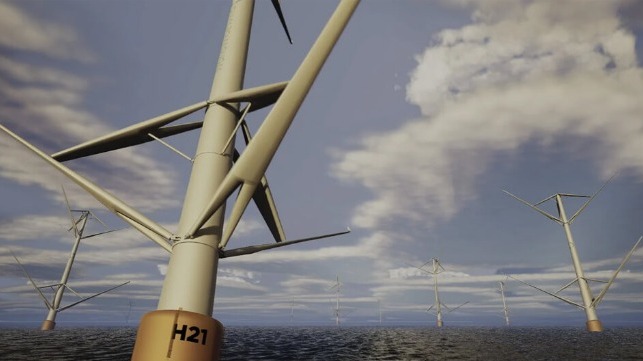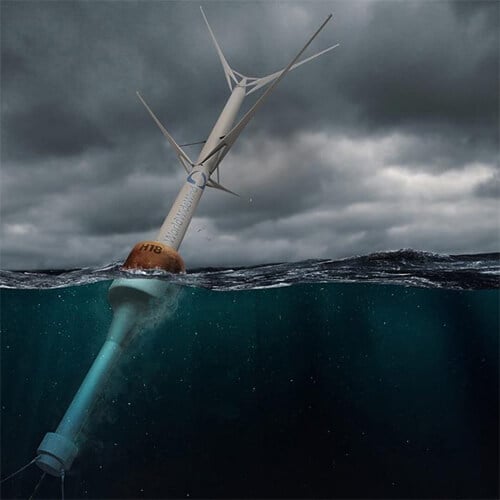Tests to Begin on a Counter-Rotating Floating Offshore Wind Turbine Concept

While the designs for fix-bottom offshore wind turbines are well established, scientists and engineers are still working to perfect the next generation of offshore wind turbines that will be best suited for floating in deep-sea locations. A Norwegian startup, World Wide Wind, has developed a unique design and reports that it has now entered into an agreement to begin the first testing of the prototype. In addition to being well-suited for the conditions deep-sea wind farms will be exposed to, the company points to cost advantages and the scalability of its design which they project could reach 40 MW for a single turbine.
World Wide Wind and AF Gruppen, the second-largest Norwegian engineering and construction company, have agreed to test the prototype of the design at the company’s yard at Vats on the southwest coast of Norway. AF Gruppen reports it will also continue to facilitate solutions for cost-effective production of foundations and assembly of wind turbines at Vats and other facilities as part of its efforts to contribute to the development of the offshore wind market.
The tests will be carried out on a 30kW prototype turbine that has a total length of approximately 62 feet and will demonstrate the main innovative elements of the design. World Wide Wind highlights that their concept uses two counter-rotating blade sets on a vertical axis and places the generator at the bottom of the structure while allowing the turbine to tilt with the wind like a sailboat.
The company highlights that 80 percent of offshore wind projects are expected to be at deep-sea locations where the wind is the strongest but where the turbines will be subjected the stronger forces including harsh sea conditions. According to World Wide Wind’s founders, the traditional horizontal-axis turbines are sub-optimal for floating wind as their design is based on onshore applications.

The generator is at the base acting as a counterweight to balance the wind turbine (World Wide Wind)
Their concept is a contra-rotating vertical turbine (CRTV). Each assembly will have two counter-rotating sets of blades mounted on the shaft while the generator is placed at the base of the shaft, underwater, acting as a stabilizer and counterweight. The blades use a three-dimensional trajectory and struts add to the wind energy capture and capture efficiency. It also produces lower wake, less wake turbulence, and wind channeled down to sea level, making it possible to reduce the distance between turbines by up to 50 percent.
Other advantages of the design are that it consists of fewer components and uses a direct drive with no gears, which reduces both its weight by up to 30 percent and the cost of construction. By reducing the distance between the turbines, it will be possible to increase the number of turbines in an area by two times, resulting in increased energy density while the vertical access turbines will also have low wind speeds, preventing bird strikes.
World Wide Wind also agreed with Norwegian industrial and energy company Hydro to explore the use of aluminum in the construction of the CRVT design. Hydro is working on low-carbon and recycled aluminum while World Wide Wind reports the design also permits for an increased use of recyclable materials.
After the prototype tests that were agreed to with AF Gruppen, the next step will be a 1.2MW pilot, which World Wide Wind reports is scheduled to be tested in early 2025. The company is targeting launching a commercial 24 MW turbine before 2030.
